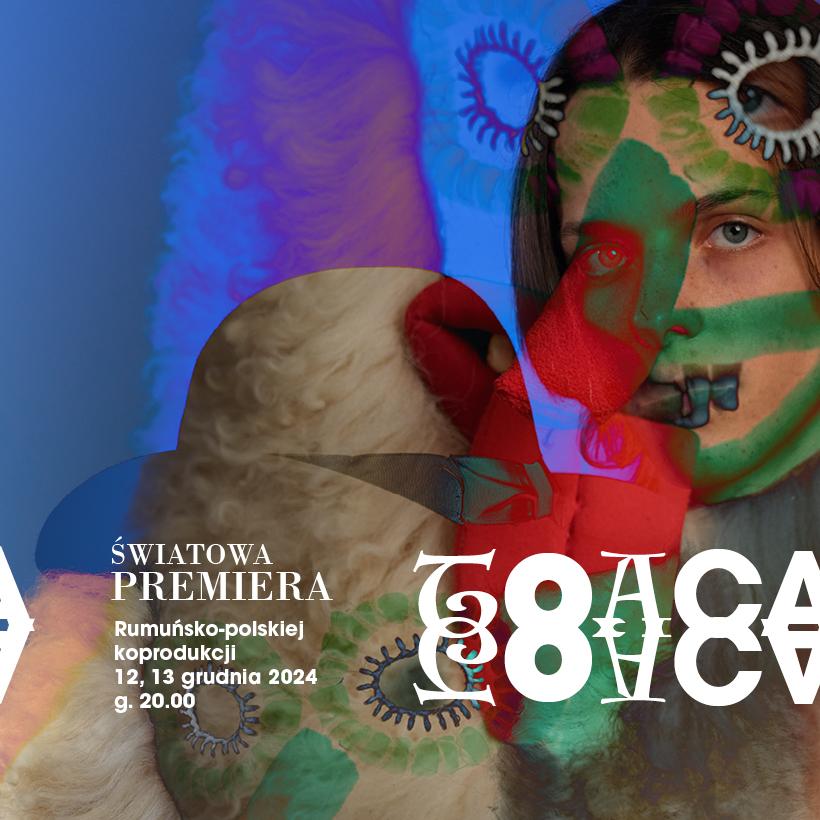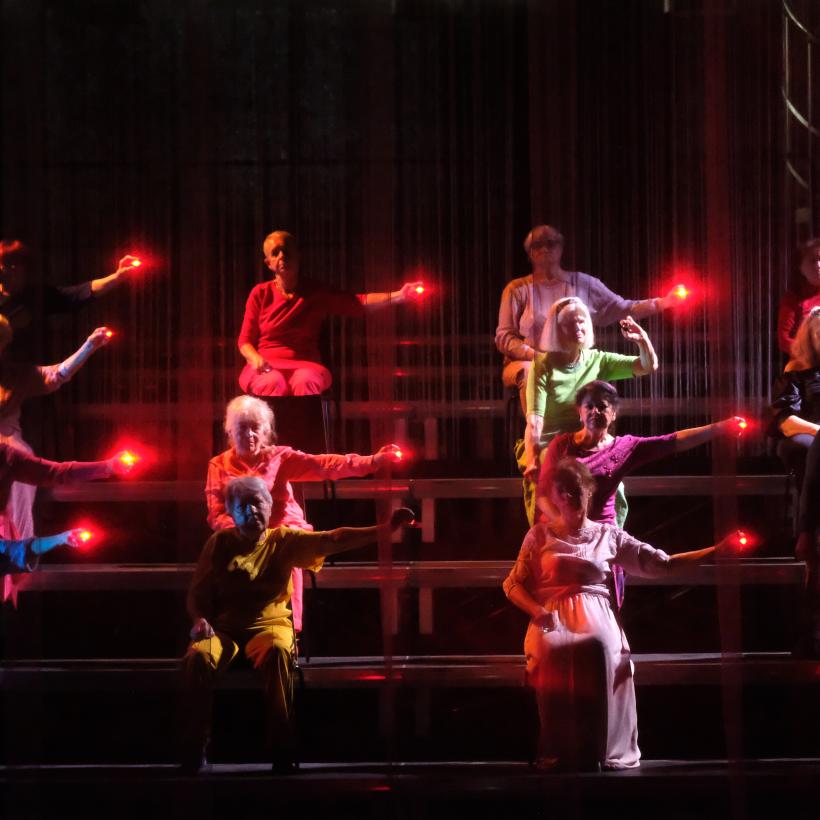TOACA
Duration: 100 min
Premiere: December 12, 2024, Polish Dance Theater
Andrea's CHAPTER
Choreography: Andrea Gavriliu
Performance Assistant: Zbigniew Kocięba
Music: Claudiu Urse
Light Direction: Michal Stenzel
Costumes: Ilona Binarsch
Masks: Ana Cazac
Dancers: Alicja Augustynek, Maksymilian Bańdo, Evelyn Blue, Kacper Bożek, Momoko Den, Julia Halka, Julia Hnatów, Patryk Jarczok, Jerzy Kazmierczak, Zbigniew Kocięba, Daniel Michna, JinWoo NamKung, Sandra Szatan, Emily Wong-Adryanczyk
Mădălina's CHAPTER
Choreography: Mădălina Dan
Performance Assistant: Patryk Jarczok
Dramaturgical Support: Mihaela Michailov
Music and Video Collage: Matze (Cristi Stanciu)
Light Direction: Michal Stenzel
Costumes: Ilona Binarsch
Dancers: Maksymilian Bańdo, Evelyn Blue, Mateusz Bossy, Julia Hnatów, Patryk Jarczok, Mateusz Krzysiak, Dominik Kupka, Aleksandra Kuś, Daniel Michna
Part of Ştefan's Chapter
Choreography: Ştefan Lupu and dancers from the cast of Ştefan's Chapter
Performance assistants: Kacper Bożek, Aleksandra Kuś
Music: Claudiu Urse
Video: Silviu Luda
Light direction: Michal Stenzel
Costumes: Ilona Binarsch
Dancers: Alicja Augustynek, Maksymilian Bańdo, Kacper Bożek, Momoko Den, Patryk Jarczok, Jerzy Kazmierczak, Aleksandra Kuś, Daniel Michna, JinWoo NamKung, Emily Wong-Adryanczyk
Sound design: Zuzanna Majewska
Performance design: Michal Beszczynski, Adriana Cygankiewicz, Dominik Dudek, Dzianis Mandzik, Michal Stenzel, Dariusz Szych
Production coordination: Monika Zembrzycka
Production: Polish Dance Theater - a cultural institution of the Local Government of the Wielkopolska Region
.
Production: Polish Dance Theatre - a cultural institution of the Self-Government of the Wielkopolska Region
Strategic Partner: Romanian Institute of Culture
Partner: Wielkopolska Railways
Media Patrons: TVP3 Poznań, Radio Poznań, kulturaupodstaw.pl, IKS/kulturapoznan.pl, Czas Kultury
Graphic design: Piotr Zdanowicz
Premiered as part of the Romania-Poland Cultural Season 2024-2025
Strategic Partner: Romanian Institute of Culture
.
Three distinct personalities, operating with different authorial techniques and styles, interpret Romania's theatrical and cultural legacy in diverse ways, combining music, dance and instrumental playing. From a contemporary point of view, they rediscover native traditions, challenging stereotypes that distort knowledge about their country of origin.
Romania is a country full of contrasts. That's why I tried to portray it throughout my work. I like to look at such contrasts with irony to bring out their absurdity. This is one of the reasons why I chose to work with Romanian traditional masks. Masks, throughout the history of theater, have been a way to reflect society in a more grotesque way and get away with it. You could show its flaws and then blame it on the mask. I'm very curious about the reaction of Polish audiences to my piece "Toaca." The reaction of the Romanian audience is likely to be divided: some will be very amused, others indignant. Romania is a country full of contrasts.
. .The concept for this performance was inspired by Romanian and Polish folklore, a combination that is reflected in every aspect of the work, from the narrative to the costume elements, music and paintings, all coming together in a space suggested to be a contemporary art museum. In a mystical sense, TOACA is a symbol of a divine calling, connecting the earthly realm with the sacred. The sound of the toaka is believed to ward off evil spirits and provide spiritual protection. In the first sequence, the dancers enter the universe of the "toaca" and take the first step in exploring this mystical realm through projections of artwork, costumes inspired by traditional Romanian and Polish folk costumes and through interaction with the "toacă." The energy of the space as a whole shapes the emotions of their bodies, gradually unfolding throughout the performance. In Romanian culture, the "toacă" is used in monasteries and churches to announce important events, such as prayer times, holidays and important moments in the liturgical calendar. I connected the elements through the "toacă" element - starting with a wedding and celebrating drunkenness and ending with a funeral - thus closing the circle of life. I asked the dancers to perform as if every move was their last, as if they were dancing their last dance, embodying the artist's dedication with every step on stage. Offering the audience their naked souls, they reveal themselves through the raw truth of art - vulnerable, yet transcendent.
Ştefan Lupu
."Toaca" is a framework in which I address themes such as home, belonging, cultural representation and national identity.
Are we our nations?
.Are our countries safe places?
At a time when the concept of nation is extremely debatable, when concepts such as identity, cultural roots, love of homeland, and representation are captured by various ideologies, we are creating a space of political and intimate gestures.
The nation is a fluid place where communities should feel represented and cared for.
At a time when the concept of nation is extremely debatable, when concepts such as identity, cultural roots, love of homeland, and representation are being captured by various ideologies, we are creating a space of political and intimate gestures. These gestures connect and reflect each other, structuring territories of belonging, emotional pulsations, peripheral narratives and central illusions.
Premiere realized within the framework of the Romania-Poland Cultural Season 2024-2025
Strategic Partner: Romanian Cultural Institute














